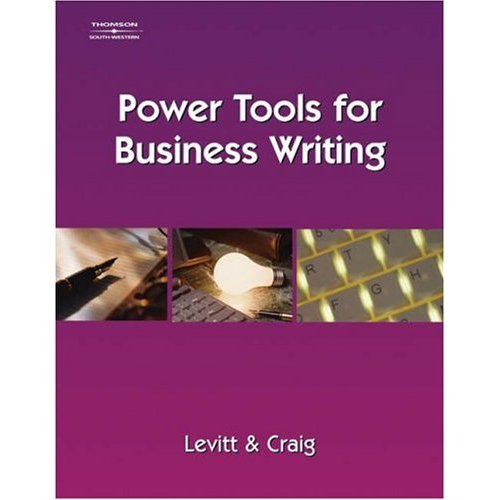Power Tools for
Business Writing
Intended
For
This course is
intended for people seeking to develop or improve business writing
skills at the intermediate level.
Prerequisites
Participants are
expected to be experienced in baasic spelling, punctuation, and
grammar skills as well as to have basic writing skills, including
sentence and paragraph development.
Description
Participants will
learn concrete business writing techniques that are easy to
apply. These tools can be used immediately to write e-mail
messages, letters, and reports that get results and project
professional competence.
Participants will learn how
to make their documents:
·
Clear ·
Concise ·
Persuasive ·
Professional
Learning
Objectives
- Knock out
writer’s block and organize messages quickly.
- Use the most
effective and appropriate message order to achieve desired results
.
- Improve
professional image through correct use of grammar and
punctuation.
- Improve content
clarity.
- Decrease the
time it takes to write high-quality documents.
- Write
persuasively through effective word choice, use of a positive tone,
and emphasis of benefits.
- Use correct
formats for business documents:
- letters
- memos
- e-mail
messages
- Enhance
professional quality of written communications through editing and
proofreading.
Nationally-Published Book
Provided
The
nationally-published book, Power Tools for Business
Writing, by Julie Levitt with Jeff Craig, is provided for each
course participant. This comprehensive book features easy
tools to boost business writing effectiveness quickly. The
book serves as both a learning tool and an efficient, user-friendly
reference for future use. It also reflects current business
trends and standards.
Contents for
Text-Workbook
Power Tools for Business Writing
Chapter 1: Quick
Starting Tools
- Writers Block
and Clustering to Generate Ideas
- Techniques for
Maintaining Momentum
- Efficient First
Draft
Chapter 2:
Grammar Foundations
- Important
Grammar Elements (Key parts of speech, clause, phrase,
sentence)
- Common Subject
and Verb Agreement Errors
Chapter 3:
Power Tools for Emphasis and Conciseness
- Active and
Passive Voice
- Dummy
Subjects
- Camouflaged and
Weak Verbs
Chapter 4:
Punctuation Essentials
- Use of the
Comma
- Use of the
Colon
- Use of the
Semicolon
Chapter 5:
Power Tools for Balance and Clarity
- Use Parallel
Structure
- Place Modifiers
Correctly
- Use Clear
Pronoun References
- Avoid “Stacks of
Nouns”
Chapter 6:
Custom Tools to Persuade Readers
- Needs of the
Reader
- Positive Tone—A
Key Factor
Chapter 7:
Framing Tools
- Effective
Sentences, Clearly Focused Paragraphs, Transitions
- Template for
Letters, Memos, and E-mail Messages (introduction, body,
conclusion)
Chapter 8:
Sound Blueprints
- Planning and
Organizational Patterns
- Effective
Introductions and Closings
- Direct Pattern
for Result-Oriented Messages and Indirect Pattern for Bad
News
- Persuasive
Messages
Chapter 9:
Formatting and Fine-Tuning Tools
- Document Formats
(letter, e-mail, memo)
- Writing
Results-Oriented E-mail Messages
- Eliminating
Outdated Terms, Redundancies, Abstract Terms
- Using Specific,
Measurable Terms
Chapter 10:
Professional Finishing Tools
- Proofreading and
Editing of Final Content
- Assessing Your
Writing: Does It Meet Business Standards?
